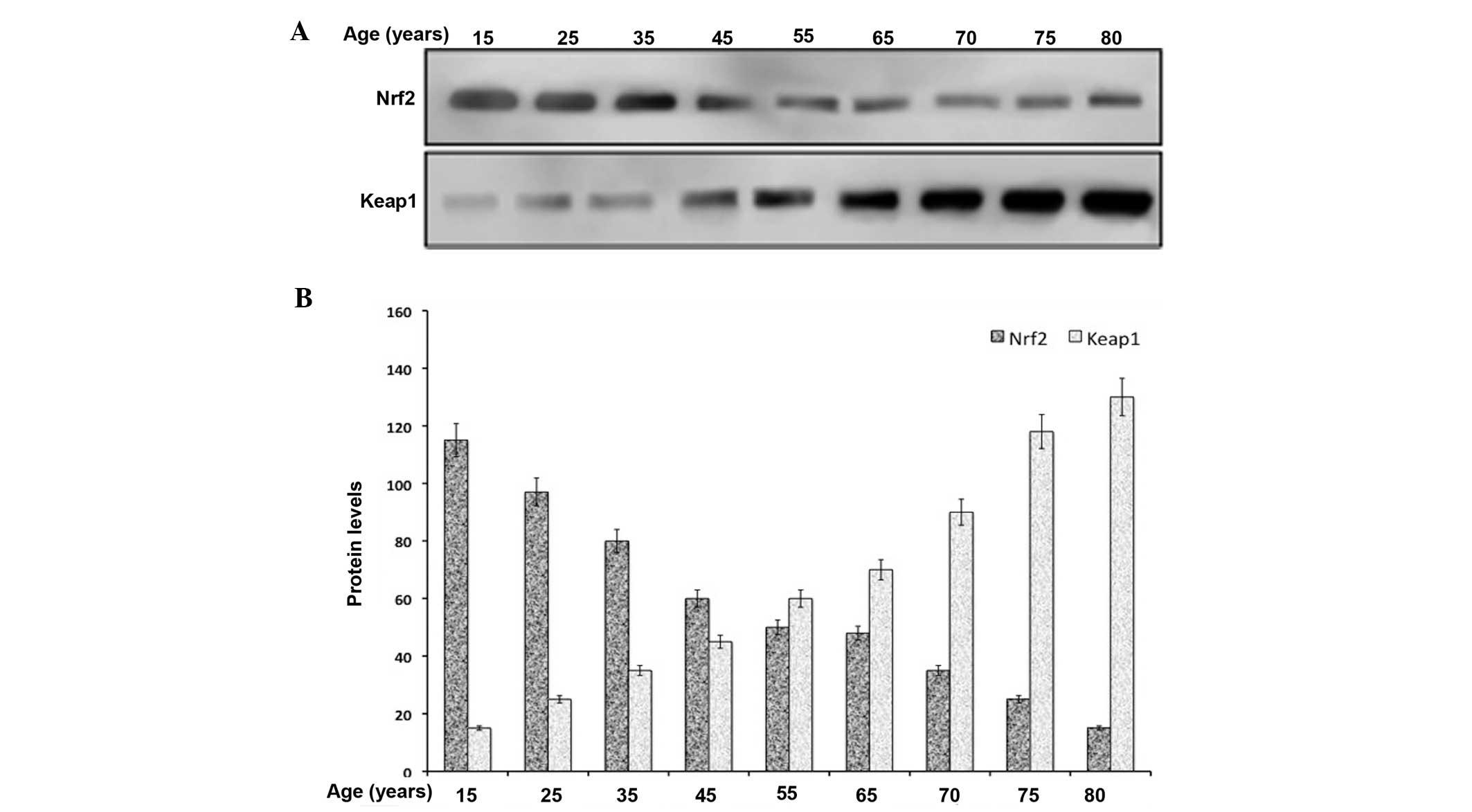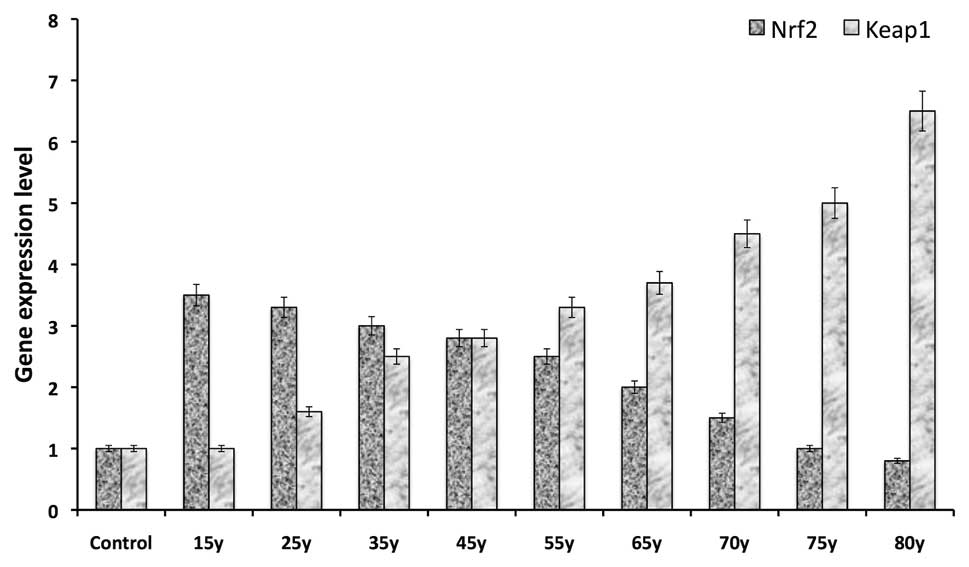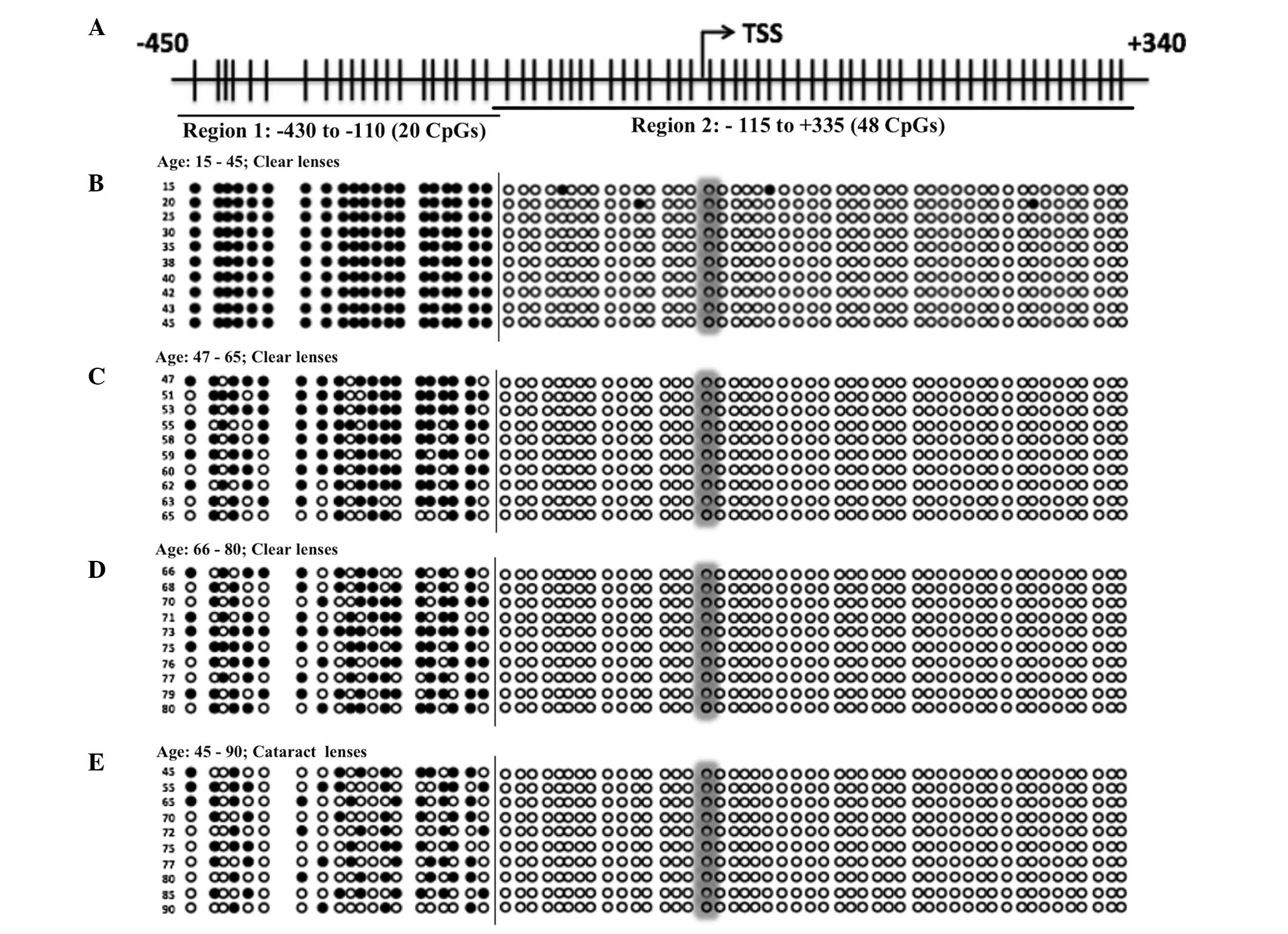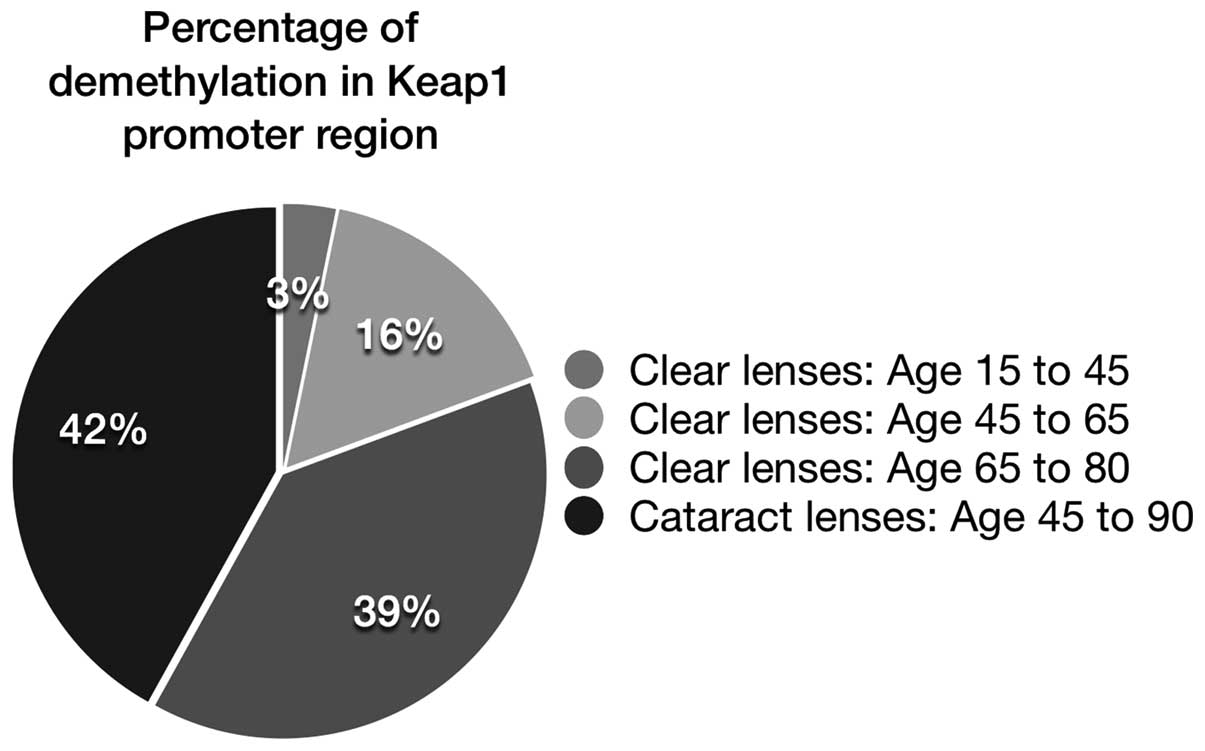|
1
|
American Federation for Aging Research
(AFAR). Cellular Senescence. http://www.afar.org/docs/migrated/110930_INFOAGING_GUIDE_CELLULAR_SCENESCENCE_Web.pdf.
Accessed October 9, 2014
|
|
2
|
Vinson JA: Oxidative stress in cataracts.
Pathophysiology. 13:151–162. 2006. View Article : Google Scholar : PubMed/NCBI
|
|
3
|
Lin Q, Zhou N, Zhang N, Zhu B, Hu S, Zhou
Z and Qi Y: Genetic variations and polymorphisms in the ezrin gene
are associated with age-related cataract. Mol Vis. 19:1572–1579.
2013.PubMed/NCBI
|
|
4
|
Enomoto A, Itoh K, Nagayoshi E, Haruta J,
Kimura T, O’Connor T, Harada T and Yamamoto M: High sensitivity of
Nrf2 knockout mice to acetaminophen hepatotoxicity associated with
decreased expression of ARE-regulated drug metabolizing enzymes and
antioxidant genes. Toxicol Sci. 59:169–177. 2001. View Article : Google Scholar : PubMed/NCBI
|
|
5
|
Kaspar JW, Niture SK and Jaiswal AK:
Nrf2:INrf2 (Keap1) signaling in oxidative stress. Free Radic Biol
Med. 47:1304–1309. 2009. View Article : Google Scholar : PubMed/NCBI
|
|
6
|
Liu H, Smith AJ, Lott MC, Bao Y, Bowater
RP, Reddan JR and Wormstone IM: Sulforaphane can protect lens cells
against oxidative stress: implications for cataract prevention.
Invest Ophthalmol Vis Sci. 54:5236–5248. 2013. View Article : Google Scholar : PubMed/NCBI
|
|
7
|
Grama CN, Suryanarayana P, Patil MA, Raghu
G, Balakrishna N, Kumar MN and Reddy GB: Efficacy of biodegradable
curcumin nanoparticles in delaying cataract in diabetic rat model.
PLoS One. 8:e782172013. View Article : Google Scholar : PubMed/NCBI
|
|
8
|
Elanchezhian R, Sakthivel M, Geraldine P
and Thomas PA: The effect of acetyl-Lcarnitine on lenticular
calpain activity in prevention of selenite-induced
cataractogenesis. Exp Eye Res. 88:938–944. 2009. View Article : Google Scholar : PubMed/NCBI
|
|
9
|
Elanchezhian R, Sakthivel M, Geraldine P
and Thomas PA: Regulatory effect of acetyl-l-carnitine on
expression of lenticular antioxidant and apoptotic genes in
selenite-induced cataract. Chem Biol Interact. 184:346–351. 2010.
View Article : Google Scholar : PubMed/NCBI
|
|
10
|
Muscarella LA, Parrella P, D’Alessandro
VD, la Torre A, Barbano R, Fontana A, Tancredi A, et al: Frequent
epigenetics inactivation of Keap1 gene in non-small cell lung
cancer. Epigenetics. 6:710–719. 2011. View Article : Google Scholar : PubMed/NCBI
|
|
11
|
Yu S, Khor TO, Cheung KL, Li W, Wu TY,
Huang Y, Foster BA, et al: Nrf2 expression is regulated by
epigenetic mechanisms in prostate cancer of TRAMP mice. PLoS One.
5:e85792011. View Article : Google Scholar
|
|
12
|
Zhang P, Singh A, Yegnasubramanian S,
Esopi D, Kombairaju P, Bodas M, Wu H, Bova SG and Biswal S: Loss of
Kelch-like ECH-associated protein 1 function in prostate cancer
cells causes chemoresistance and radioresistance and promotes tumor
growth. Mol Cancer Ther. 9:336–346. 2010. View Article : Google Scholar : PubMed/NCBI
|
|
13
|
Wang R, An J, Ji F, Jiao H, Sun H and Zhou
D: Hypermethylation of the Keap1 gene in human lung cancer cell
lines and lung cancer tissues. Biochem Biophys Res Commun.
373:151–154. 2008. View Article : Google Scholar : PubMed/NCBI
|
|
14
|
Bradford MM: A rapid and sensitive method
for the quantitation of microgram quantities of protein utilizing
the principle of protein-dye binding. Anal Biochem. 72:248–254.
1976. View Article : Google Scholar : PubMed/NCBI
|
|
15
|
Elanchezhian R, Palsamy P, Madson CJ,
Mulhern ML, Lynch DW, Troia AM, Usukura J and Shinohara T: Low
glucose under hypoxic conditions induces unfolded protein response
and produces reactive oxygen species in lens epithelial cells. Cell
Death Dis. 3:e3012012. View Article : Google Scholar : PubMed/NCBI
|
|
16
|
McMahon M, Itoh K, Yamamoto M and Hayes
JD: Keap1-dependent proteasomal degradation of transcription factor
Nrf2 contributes to the negative regulation of antioxidant response
element-driven gene expression. J Biol Chem. 13:21592–21600. 2003.
View Article : Google Scholar
|
|
17
|
Reisman SA, Yeager RL, Yamamoto M and
Klaassen CD: Increased Nrf2 activation in livers from
Keap1-knockdown mice increases expression of cytoprotective genes
that detoxify electrophiles more than those that detoxify reactive
oxygen species. Toxicol Sci. 108:35–47. 2009. View Article : Google Scholar : PubMed/NCBI
|
|
18
|
Ehrlich M: DNA methylation in cancer: too
much, but also too little. Oncogene. 21:5400–5413. 2002. View Article : Google Scholar : PubMed/NCBI
|
|
19
|
Frigola J, Solé X, Paz MF, Moreno V,
Esteller M, Capellà G and Peinado MA: Differential DNA
hypermethylation and hypomethylation signatures in colorectal
cancer. Hum Mol Genet. 4:319–326. 2005.
|
|
20
|
Suzuki K, Suzuki I, Leodolter A, Alonso S,
Horiuchi S, Yamashita K and Perucho M: Global DNA demethylation in
gastrointestinal cancer is age dependent and precedes genomic
damage. Cancer Cell. 9:199–207. 2006. View Article : Google Scholar : PubMed/NCBI
|
|
21
|
Gowers IR, Walters K, Kiss-Toth E, Read
RC, Duff GW and Wilson AG: Age-related loss of CpG methylation in
the tumour necrosis factor promoter. Cytokine. 56:792–797. 2011.
View Article : Google Scholar : PubMed/NCBI
|
|
22
|
Hanada N, Takahata T, Zhou Q, Ye X, Sun R,
Itoh J, Ishiguro A, et al: Methylation of the KEAP1 gene promoter
region in human colorectal cancer. BMC Cancer. 13:662012.
View Article : Google Scholar
|













